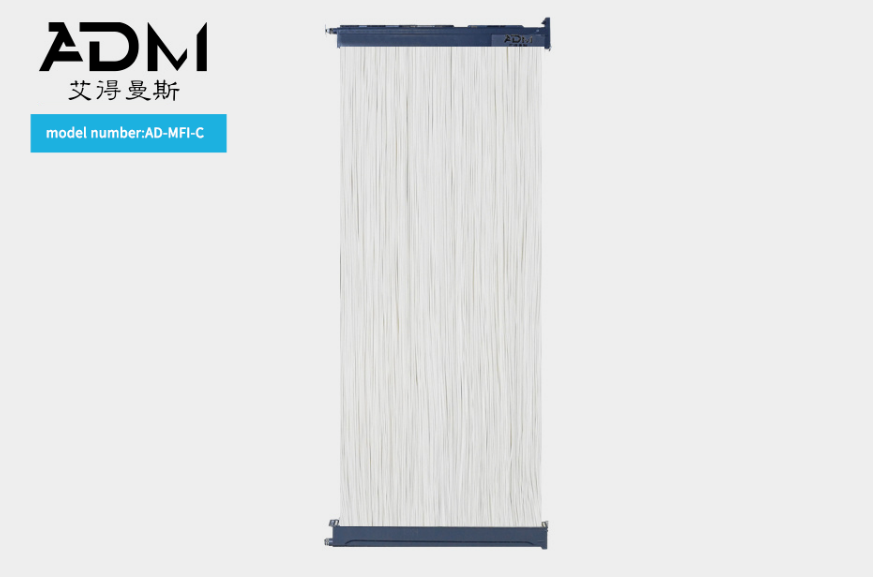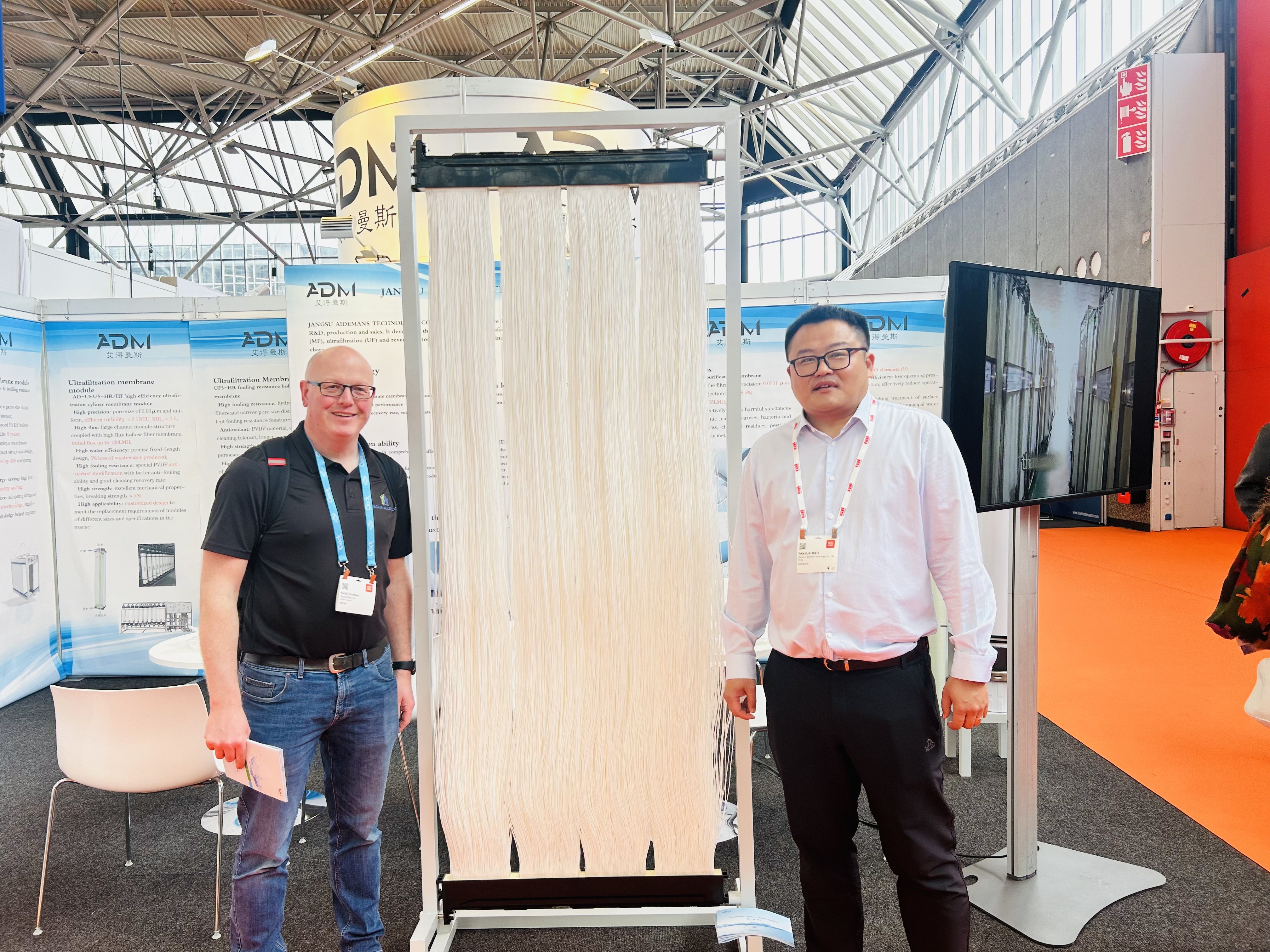Microfiltration Membrane Module
Release time:
2025-08-14
Microfiltration (MF) membrane modules have emerged as a critical technology in liquid and gas separation processes across multiple industries. These semi-permeable barriers efficiently remove suspended solids, bacteria, and large molecules while allowing water and small solutes to pass through. With pore sizes typically ranging from 0.1 to 10 micrometers, microfiltration membranes bridge the gap between ultrafiltration and conventional filtration methods.

Operating Conditions
| Name | Unit | Specification | |
| Model | AD-MFI-C | ||
| Membrane Area | m² | 31.6/34.4/40 | |
| Material | Hollow Fiber Membrane | -- | PVDF+PET |
| Sealant Resin | -- | Polyurethane Resin | |
| Support Rod | -- | None | |
| Membrane Box Material | -- | ABS/UPVC | |
| Membrane Fiber Inner and Outer Diameter | mm | 1.0/2.0 | |
| Membrane Fiber Pore Size | micrometer | 0.1 | |
| Water Turbidity | NTU | <1 | |
| Size | mm | 844*49*2198 | |
| Effective Length of Membrane Fiber | mm | 1940 | |
| Name | Unit | Range |
| Working Temperature | ℃ | 6-35 |
| Operating pH | -- | 6-9 |
| Acid-Base Resistance | -- | pH2-12 |
| Design Flux | L/m² ·h | 15-30 |
| Operating Mode | Negative Pressure Suction | |
| Maximum Transmembrane Pressure Difference | kPa | 45 |
| Gas-Water Ratio | (3-8):1 | |
| Influent Animal and Vegetable Oil | mg/L | <50 |
| Influent Mineral Oil | mg/L | <3 |
| Recommended Sludge Concentration (MLSS) | mg/L | 5000-12000 |
[Note]: The specific operating mode should be set according to the characteristics of the influent water quality and operating conditions.
Microfiltration (MF) membrane modules have emerged as a critical technology in liquid and gas separation processes across multiple industries. These semi-permeable barriers efficiently remove suspended solids, bacteria, and large molecules while allowing water and small solutes to pass through. With pore sizes typically ranging from 0.1 to 10 micrometers, microfiltration membranes bridge the gap between ultrafiltration and conventional filtration methods.
Application Scenarios
1. Water and Wastewater Treatment
Microfiltration membrane modules play a vital role in modern water treatment plants, particularly for:
Drinking water purification (removal of turbidity and pathogens)
Wastewater reuse and recycling
Pretreatment for reverse osmosis systems
Industrial wastewater treatment (textile, chemical, and mining industries)
In municipal water treatment, MF systems consistently produce high-quality effluent that meets stringent regulatory standards. Their ability to handle variable feed water quality makes them ideal for regions with challenging water sources.
2. Food and Beverage Industry
The food processing sector extensively utilizes microfiltration technology for:
Cold sterilization of beverages (beer, wine, juices)
Dairy processing (milk standardization, whey protein concentration)
Clarification of fruit juices and sweeteners
Removal of spoilage microorganisms in liquid food products
MF membranes help food manufacturers improve product quality while extending shelf life. Their gentle processing conditions preserve flavor profiles and nutritional content better than thermal treatment methods.
Future Developments
Emerging trends in microfiltration technology include:
Development of fouling-resistant membranes with enhanced surface properties
Integration with IoT for smart monitoring and predictive maintenance
Hybrid systems combining MF with other membrane processes
Application in biopharmaceuticals for cell harvesting and virus removal
Conclusion
Microfiltration membrane modules represent a versatile and efficient solution for numerous separation challenges. Their combination of high performance, energy efficiency, and operational flexibility makes them indispensable in water treatment, food processing, and industrial applications. As membrane materials and system designs continue to improve, microfiltration technology will play an increasingly important role in addressing global water scarcity and advancing sustainable industrial practices.
With ongoing research focused on enhancing membrane durability and selectivity, microfiltration systems are poised to expand into new applications while delivering greater value to existing users across multiple sectors.


